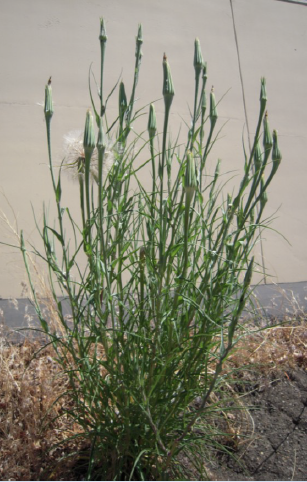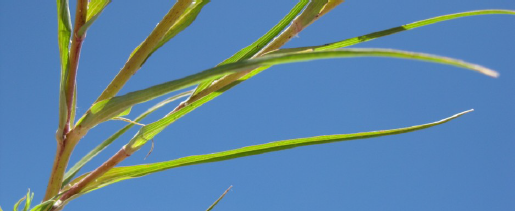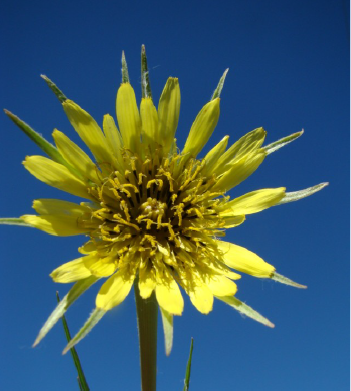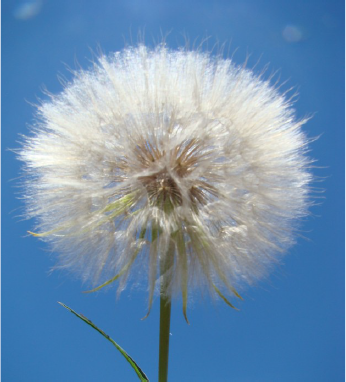Other common names
Yellow salsify, western goat’s beard, yellow goat’s beard, wild oysterplant
Scientific name
Tragopogon dubius
Family
Asteraceae
Description
This grass-like plant is easily recognized by the large 2- to 4-inch-diameter puffball that develops from the yellow flowers. Plants stay in the ground-hugging rosette form until flowering occurs.

Typical plant growing in a disturbed site. Photo by W. Hanson Mazet.
Leaves
Long, narrow and grasslike, but thicker than grass blades. Leaves ooze a milky sap when broken.

The narrow, grass-like leaves are wider at the base, and can be up to 12 inches long. Photo by S. Donaldson.
Stems
Flowering stems are produced in the second year of growth. The stem is enlarged and hollow next to the flower. Stems also ooze a milky sap when broken.
Flowers
Single yellow flowers appear at the end of long stalks. Long pointed bracts extend below the petals, giving a starry look to the flower.


The bright-yellow flowers open early in the day and close by noon (left). The flower develops into a large, highly visible puff ball (right). Photos by W. Hanson Mazet.
Roots
Grows a thick, branched taproot; oozes a milky sap when broken.
Native to
Europe
Where it grows
Roadsides, vacant lots, pastures and disturbed areas
Life cycle
Biennial (lives two years)
Reproduction
Reproduces by seed carried on the wind

The seedling appears grass-like. Photo by J. DiTomaso, UC Davis.
Control methods
As with all biennials, preventing seed production is essential. Control before seed heads are produced.
Mechanical
Cultivation is successful in controlling this plant. Dig, hoe or pull young plants. Plants pull easily. Mow when flowers first appear and repeat mowing as needed.
Cultural
Plant desirable vegetation to help suppress it.
Biological
None commercially available.
Chemical
Try broadleaf selective herbicides such as 2,4-D + dicamba on young plants. Dicamba can persist for several months and may damage desirable plants in the area treated. Glyphosate can also be used on young plants but is nonselective and damages both grasses and broadleaf plants. Pre-emergence herbicides can be used to manage existing seed banks.
References
DiTomaso, J.M. and E.A. Healy. 2007. Weeds of California and Other Western States. University of California Publication 3488.
Goat’s beard or western salsify. Virginia Tech Weed Identification Guide.
Western salsify. Ohio perennial and biennial weed guide, OARDC.
Whitson, Tom D. (editor). 2002. Weeds of the West. University of Wyoming, Jackson, Wyoming.
USDA-NRCS Plants Database. 2011. PLANTS profile for Tragopogon dubius, USDA.


